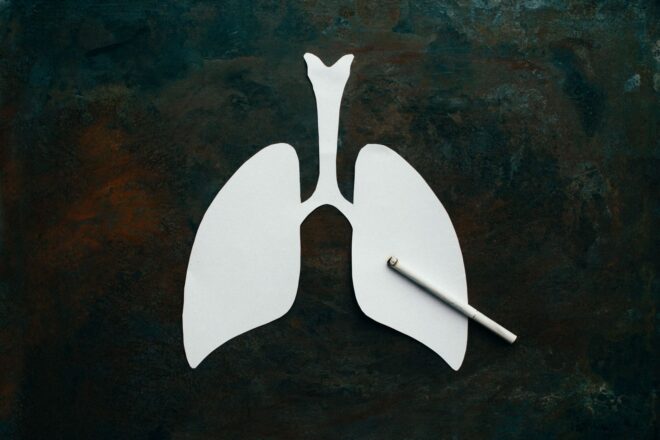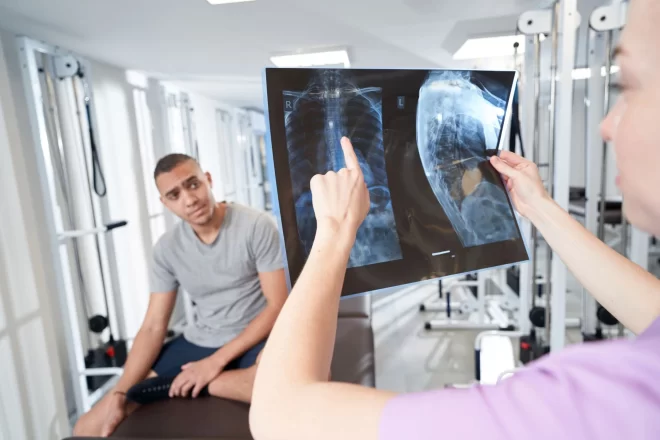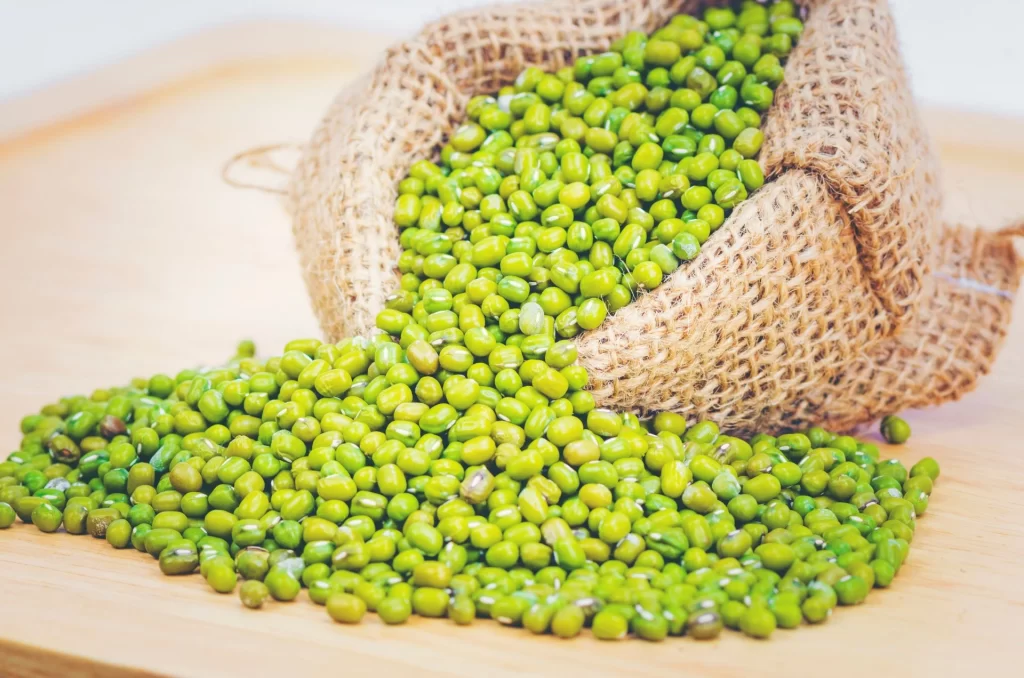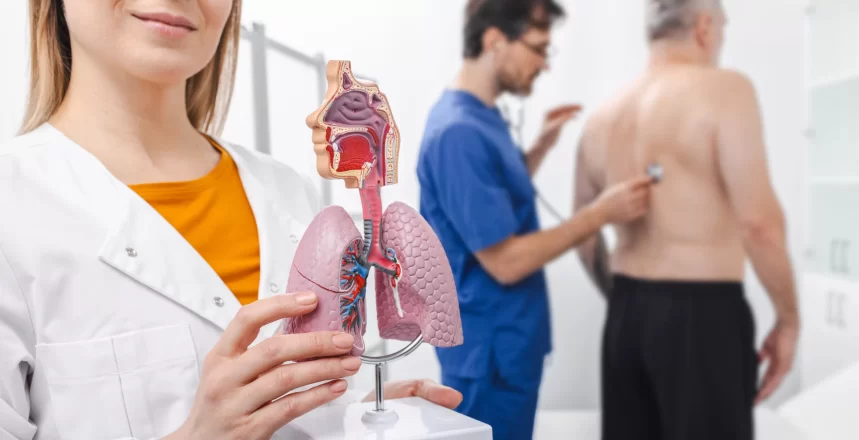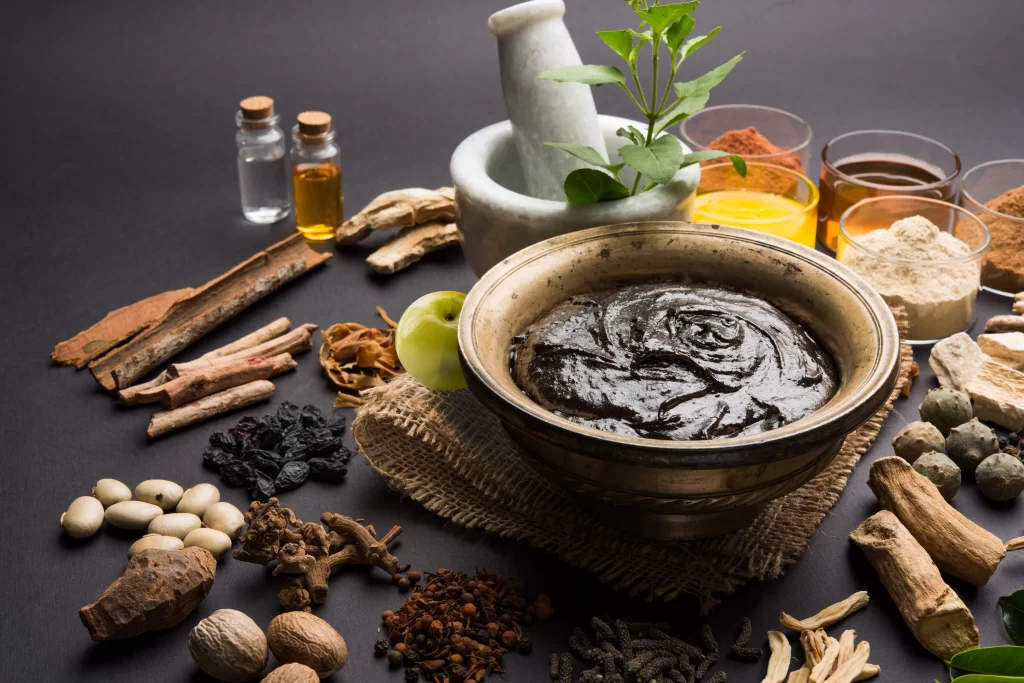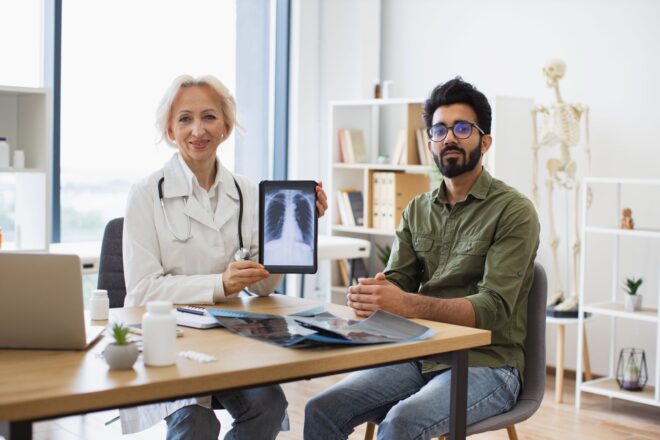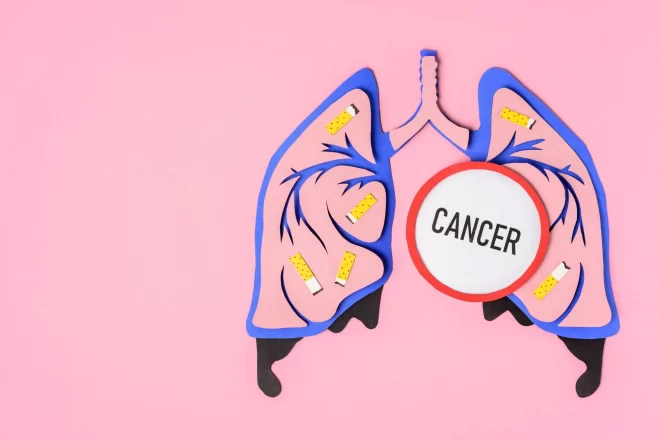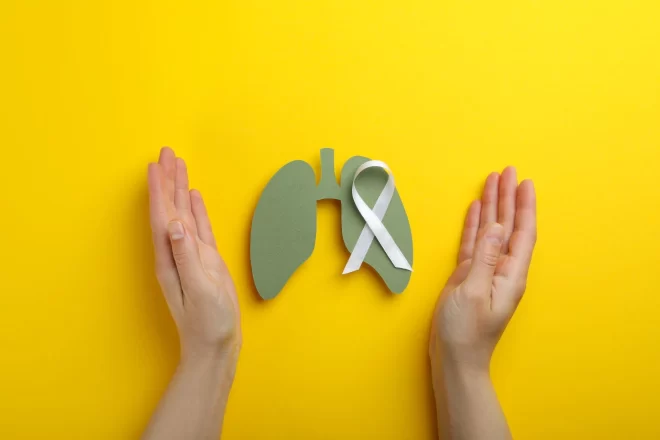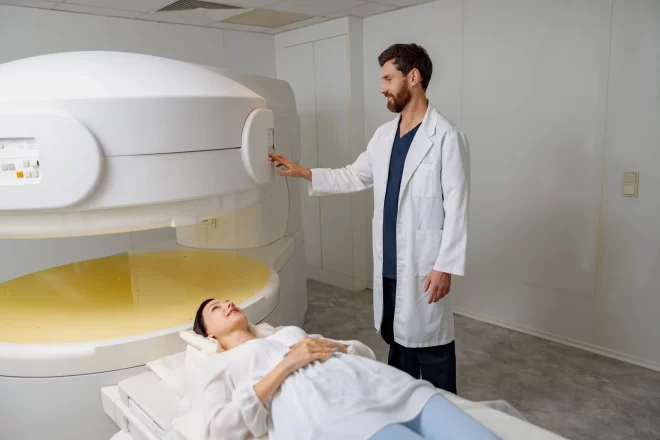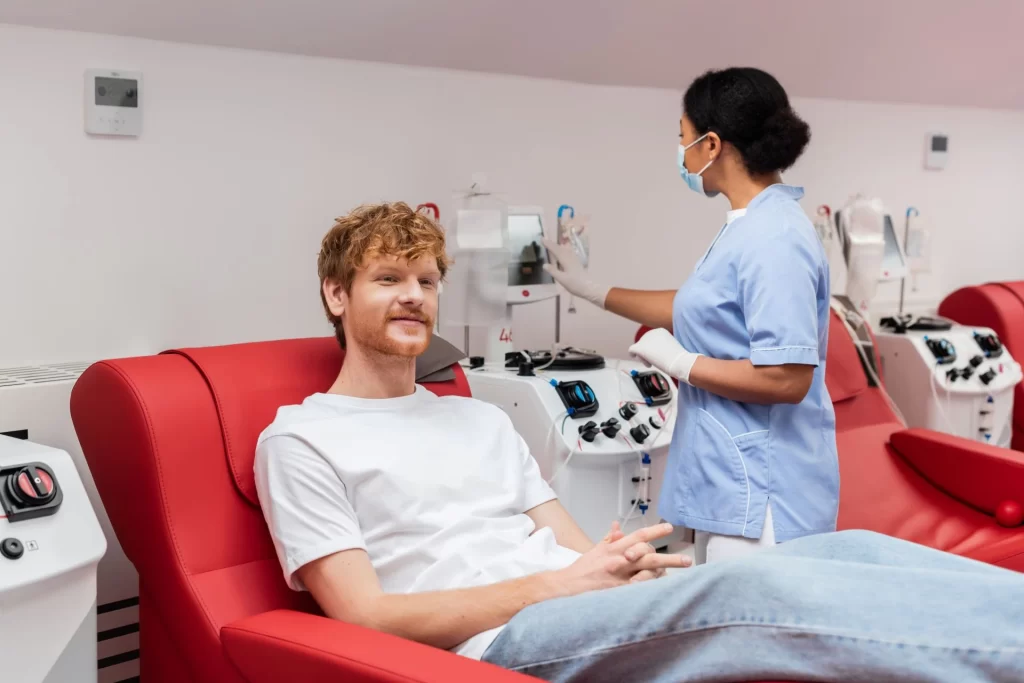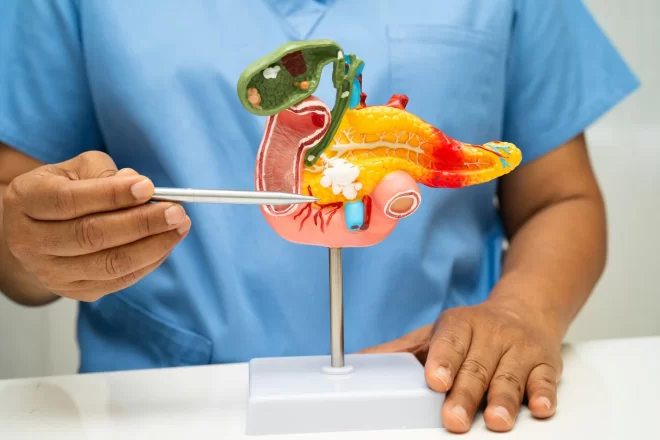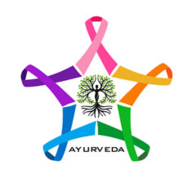Lung cancer is a type of cancer that originates in the tissues of the lungs and usually in the cells lining the air passages. It is a malignant tumor, so it can grow uncontrollably and can spread to other parts of the body.
Types of Lung Cancer:
The two main types of primary lung cancer are as follows:
1) Non-small cell lung cancer (NSCLC): This is most common type of lung cancer and accounts for almost 80% to 85% of all lung cancer cases diagnosed. The subtypes of NSCLC are as follows:
- Adenocarcinoma: It is often found in outer areas of the lungs and is most common lung cancer among non-smokers.
- Squamous Cell Carcinoma: It is usually found in the center of the lung, near the air tube or bronchus.
- Large Cell Carcinoma: It can originate in any parts of the lungs and tends to be aggressive in nature.
2) Small Cell Lung Cancer (SCLC): This is less common but highly aggressive type of lung cancer. It is strongly associates with smoking and tends to grow more rapidly than NSCLC.
About Varanasi
Varanasi which is also known as Kashi or Banaras is one of the oldest living cities in the world and a major spiritual, cultural, and healing center in India. Varanasi is also well known for its Ayurvedic and holistic healthcare system and has many well-known Ayurvedic Center for treatment of chronic and terminal illness like cancer.

Dr. Ravi Gupta is a well-known and reputed Ayurvedic Doctor based in Varanasi. He is known for his specialized cancer care modalities using traditional Ayurvedic and Panchakarma Therapies. Dr. Ravi Gupta combines deep traditional knowledge of Ayurveda in managing many complex cases with natural therapies.
Treatment of Lung Cancer by Dr. Ravi Gupta. M.D., Ayurveda Cancer Consultant
Dr. Ravi Gupta is well-renowned Ayurveda Cancer Consultant with over 12 years of experience in Cancer Care and Treatment. He offers specialized treatment for Lung Cancer and has individualized approach in cancer management.
Dr. Ravi Gupta firmly believes in treatment plans that is based on classical and traditional Ayurvedic principles. He also aims to improve the quality of life, reduce cancer symptoms, slow disease progression, and enhance overall immunity and vitality.
Key Components of Dr. Ravi Gupta’s Ayurvedic Lung Cancer Treatment:
1) Herbal Medicines in the Treatment of Lung Cancer
Dr. Ravi Gupta advises multiple combination of classical herbal formulations, herbo-mineral formulations, and certain individualized formulations that help to manage and treat lung cancer. His goal of treatment is to address tumor suppression, immune modulation, detoxification, and lung tissue rejuvenation.
- Haridra (Curcuma longa): The active compound of haridra is curcumin and it is a potent anti-inflammatory, anti-oxidant, and anti-cancer in nature. It also inhibits cancer cells proliferation and further reduce inflammation in lung tissue.
- Vasa (Adhatoda vasica): It is potent mucolytic and anti-inflammatory in nature. It is improves respiratory function.
- Pippali (Piper longum): It helps in detoxification and enhances absorption of other herbs.

2) Panchakarma Therapy in the Treatment of Lung Cancer
Panchakarma is the classical Ayurvedic system of deep detoxification, rejuvenation, and purification. In the management of lung cancer, Dr. Ravi Gupta employs specially designed Panchakarma protocols to:
- Virechana (purgation therapy)
- Basti (medicated enemas)
- Nasya (nasal administration of herbs) for respiratory cleansing
3) Rasayana Therapy (Rejuvenation Therapy) in the Treatment for Lung Cancer
Rasayana Therapy helps to rejuvenate the body, build immunity, and support long-term healing in lung cancer patients. Certain Rasayana Therapy that proves beneficial in lung cancer patients are Swarna Bhasma, Abhraka Bhasma, Amalaki Rasayana, and Chyawanprash Rasayana. Rasayana Therapy proves beneficial in lung cancer patients in following way:
- It helps to reduce fatigue in lung cancer patients.
- It helps in enhancing tissue regeneration in lung cancer patients.
- It helps to support in lung tissue strength and reduce further.
4) Lifestyle and Breathing Practices for Lung Cancer (Vihara and Pranayama)
Lung Cancer patients should always follow Sattvic Lifestyle, including
- Gentle yogic breathing techniques like Anulom-Vilom and Bhramari Pranayama.
- Daily routine exercises improve lung capacity and further reduce stress in lung cancer patients.
- Stress reduction techniques such as meditation and Ayurvedic counselling.
+91-9819274611
Your health is my priority, and together, we can work towards a brighter, healthier future.
— Dr. Ravi Gupta, M.D. (Ayurveda),
Ayurveda Cancer Consultant,
Specialist in Ayurveda and Panchakarma.

